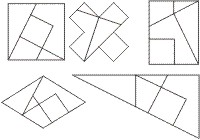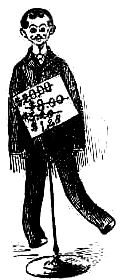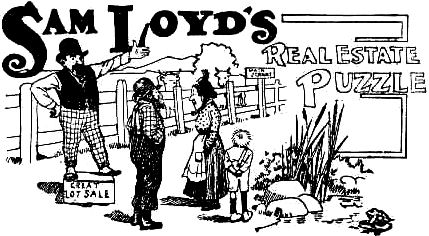



“AGAIN I am forced to tell your Imperial Highness that the royal road to geometry has not yet been discovered.” exclaimed Euclid to King Ptolemy, who had been dozing during a lecture on the elements of geometry.
“To illustrate the futility of knocking learning into a pupil's skull with a wormwood club,” said Beppo, the court jester, “I make bold to volunteer a few soothing remarks.
“My learned friend has discoursed upon the six geometrical forms: the trapezium, the square, Greek cross, parallelogram or diamond, rectangle and triangle. The trapezium, he has told us is a geometrical form with four sides, no two of which are parallel. The shape was originated many years ago as the mainsail for a catamaran, the five other geometrical shapes will readily be recognized as the flags or ensigns of ancient yachts. The most interesting part of the whole business is that I can mark off the trapezium into five parts, which form six wonderful puzzles. Cut these five pieces out of paper and it will be no easy task to rearrange them to form the trapezium. Then utilize all five of the pieces so as to form a perfect square! They will also fit together to make a Greek cross. If properly placed they will make a perfect parallelogram, or a rectangle, or a right angled-triangle.
“Thus we have the six geometrical shapes illustrated by these five magical pieces, and it is safe to say that by the time you have guessed these six puzzles you will be pretty familiar with the geometrical form, and won't have gone to sleep over Euclid’s eleven volumes either! All of the five pieces must be utilized in producing each of the patterns shown, just as in the case of the trapezium, and will go far towards teaching the mystic affinity or relationship betweenthe different geometrical forms as treated by ancient occult writers.”
The following are the five geometrical forms:

2. A Remarkable Cut Price Puzzle.

It looks as if Isaacstein, the popular one price cash clothier, was determined to dispose of his stock at any old price, but you will discover that there is method in his madness if you realize that it requires one more mark-down to reach cost. See if you can figure it out.
In Isaacstein's remarkable cut in prices, as the dealer has reduced the price 2/5 each mark down, the next should be 51 cents (plus .002).
3.

While the suburban boom is on we will take occasion to tell how a real estate speculator stopped off at a wrong station, and, having a couple of hours to wait for the next train, made a quick turn. He bought a piece of land for $243, divided it into lots, and sold them back to the original owners at $18 per lot, and cleaned up the whole transaction before his train arrived. He made a profit on the deal just equal to his first cost price of six lots, so you are asked to tell just how many lots were laid out in the town of Boomville.
There were eighteen lots, bought at $13.50 a lot, and sold at $18, making a profit of $81, which is the cost price of six lots.
[Page 60]